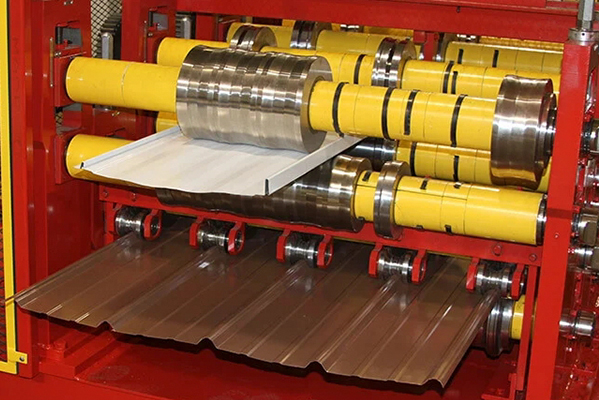Navigation Menu
Contact Us
- Email:
- info@wxavatar.com
- Address:
- Yurong Village, Yuqi Street, Huishan District, Wuxi, China.
Release Date:Apr 29, 2025 Visit:37 Source:Roll Forming Machine Factory
Roll forming is a highly efficient metal shaping process that offers numerous advantages for manufacturers across various industries. This continuous bending operation transforms metal coils or sheets into precise cross-sectional profiles with consistent quality. Among its many benefits, one key advantage stands out: the ability to produce complex, uniform shapes with high precision while minimizing material waste.

Consistent Quality and Precision
Roll forming excels at creating long lengths of metal parts with tight tolerances and uniform dimensions. Unlike other forming methods that may require multiple steps, roll forming progressively shapes the metal through a series of rollers, ensuring each section meets exact specifications. This consistency is particularly valuable in industries such as automotive, construction, and aerospace, where precision is critical.
Cost-Effective Production
Since roll forming is a continuous process, it significantly reduces labor costs and production time compared to alternative methods like stamping or extrusion. The high-speed nature of roll forming allows for large volumes of parts to be manufactured quickly, making it ideal for mass production. Additionally, the process minimizes scrap material, as it efficiently utilizes the metal coil with little to no offcuts.
Versatility in Design
Manufacturers can create a wide range of profiles—from simple channels to intricate multi-part geometries—without the need for extensive tooling changes. This flexibility enables businesses to adapt to different product requirements without major production delays. Furthermore, roll forming can work with various metals, including steel, aluminum, and copper, providing options for different strength and durability needs.
Enhanced Strength and Durability
The cold-forming nature of roll forming work-hardens the metal, improving its structural integrity without additional heat treatment. This results in stronger finished products that maintain their shape under stress, making them suitable for load-bearing applications.

Conclusion
Roll forming remains a preferred choice for manufacturers seeking efficiency, precision, and cost savings. Its ability to produce complex, high-quality parts with minimal waste makes it a valuable process in modern industrial applications. Whether for automotive components, building materials, or consumer goods, roll forming delivers reliable performance and long-term value.